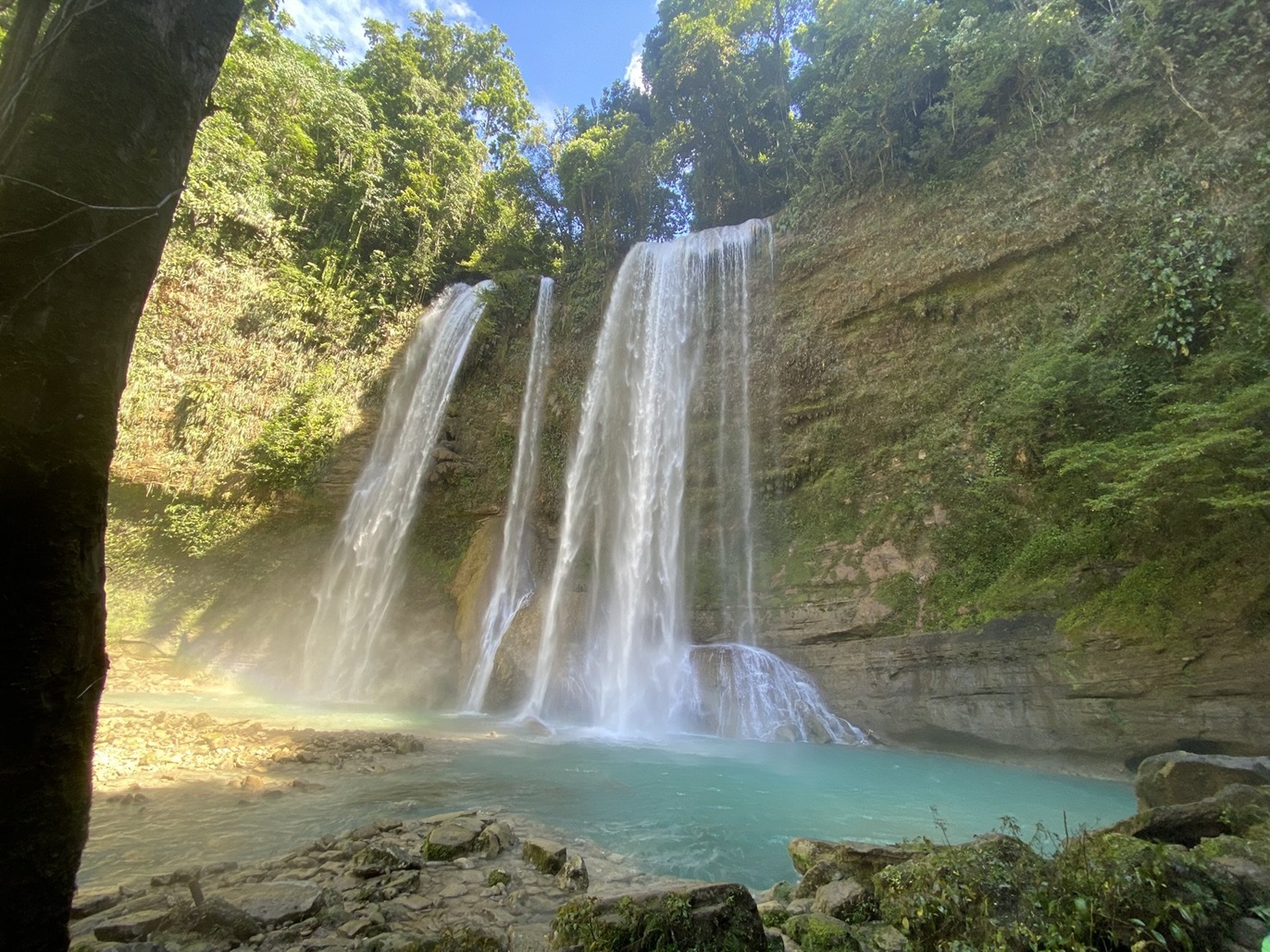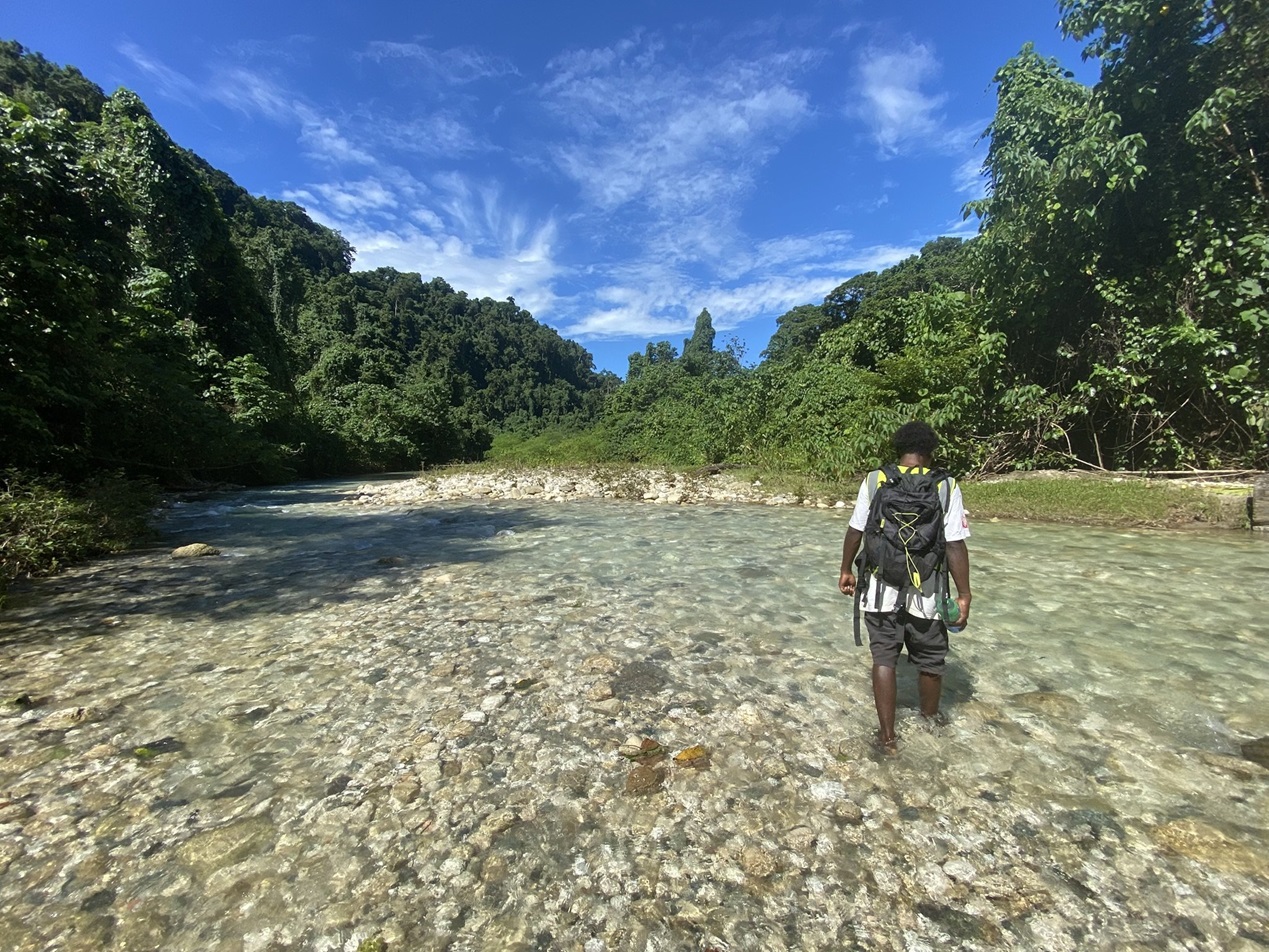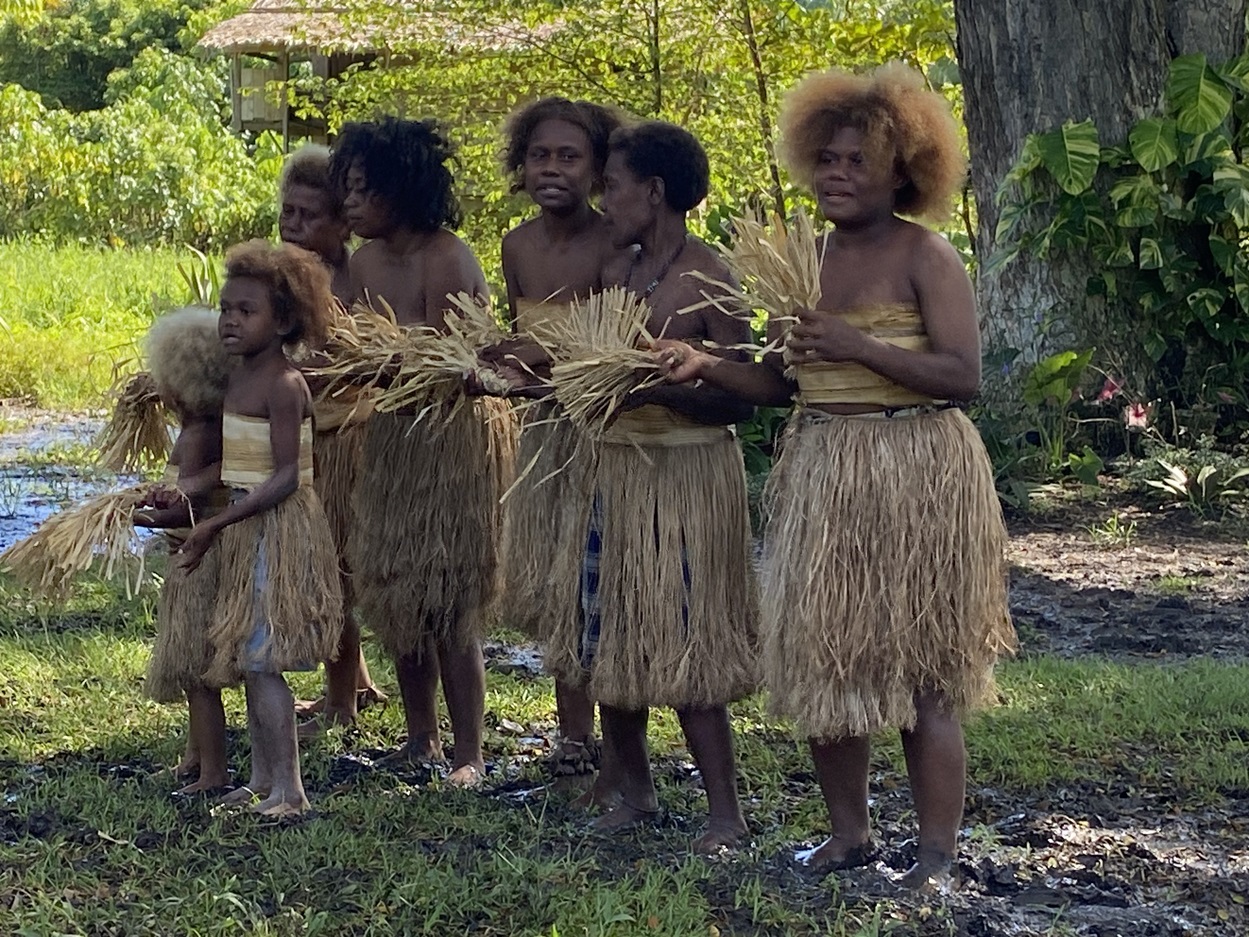
I’m loath to leave the Solomon Islands’ isolated Nggatirana Island’s white sand beach, crystal-clear sea, coral reefs and population of three — that I’ve seen — for its largest island, Guadalcanal and capital, Honiara, population about 116,000. But all good things come to an end.
Two-lane Kukum Highway, Guadalcanal’s only highway, takes us west from Honiara Airport over a bridge at Hells Point where World War 2 bombs still found throughout the Solomon Islands are detonated.
We cross the brown Lunga River wending between thickly-vegetated banks.
The highway becomes four lanes, passing the impressive 2023-built, 10,000-seat National Sports Stadium, a standout among low-rise, mainly tired-looking buildings and dusty surrounds. Crowds wait for mini-buses; traffic lights don’t exist!
The central, small National Museum complex gives me an understanding of the country’s history, traditions and World War 2 legacy, a lot of the battles between the Japanese and American forces were fought in Guadalcanal.
Cultural artefacts include a betel nut mortar, a fish-shaped casket for holding a body, tattooing needles made of Ibis wings and legs, panpipes, spears, shark rattle and shell money — used for bride payments, settling disputes or exchanged for goods and still in use.
The Culture and History Gallery in the same complex, tells of the first Europeans’ arrival in 1568, a Spanish expedition from Peru, and archaeological finds.
A room devoted to The Tensions details the 1998-2003 chaos after settlers from nearby Malaita Island were evicted by Guadalcanal indigenous villagers.
Almost opposite, Heritage Park Hotel is four-star luxury.
Only three storeys high and spread over five acres of manicured grounds, its terrace restaurant, bar and outdoor pool, abut the northern coastline. My balcony has a glimpse of the sea. It’s not Nggatirana Island ... but it’s pretty special.
Red umbrellas shade fruit and vegetables at Honiara central market; bananas, pineapples, cassava, sweet potato, fern fronds, cabbage, limes, mandarins.
Inside a roofed, open-sided area where sellers quietly await a sale, I wander along an alley of watermelons.
In another I find ginger, peanuts fresh from the ground, breadfruit, yam, taro, ngali nuts, spring onions and bunches of unknown foliage wrapped in banana leaves.

Heading eastwards, back along Kukum Highway, we turn off on to a road lined with towering coconut palms alongside flourishing banana and cocoa trees from which green pods hang. Cocoa beans dry on tarpaulins on the ground near wooden stilt buildings.
We walk a dirt road to the Hotomai Village.
The deep tone of a conch shell sounds. From behind trees, spears raised, loin-clothed warriors run, yelling and lunging, surrounding us.
It’s intimidating ... The chief appears, shell money around his neck ... Then smiles break out.
Women greet us with song and Nisbert, her mouth stained red from chewing betel nut, dressed, as all women are, in a sago palm top and a skirt made from stripped tubers twisted into strands, proceeds to show us her village.
Below a thatched roof, unripe bananas roasting on hot stones are offered. They’re not sweet and are rather dry. A man rubbing debarked wood with a stick eventually gets enough flame to light homegrown tobacco stuffed in the end of his coconut palm pipe.
Another thrusts a shoulder-height, pointed, wooden pole into the dark earth of the vegetable garden, digging it up for a woman to plant yams.
Taro, bananas, sugarcane and leafy vegetables I can’t identify are thriving. We try baked taro, mashed and rolled in dried coconut — much tastier than the banana.
Men fashion sago palm leaves, bamboo and lawyer cane vine into roofing; women weave fine, stiff strands of the vine or coconut palm spines into baskets. I peer into a wooden hut, used to settle disputes, its walls and roof secured with strips of vine. Spear-like carvings stand vertical across the front of the sago palm roof line.
Another holds spears and shields of ancient ancestors, which only chosen men are permitted to enter to seek solutions to village problems.
Farewelled with smiles, we continue on an ascending, dirt road among hills covered in dense, verdant vegetation to Parangiju Mountain Lodge.
Large-leafed vines drape towering trees forming ghostly shapes; yellow flowers and red-flowered wild ginger blaze; the wide Tenaru River is milky-blue.
At the lodges, roofed, open-sided restaurant views are panoramic over a green-hued countryside, hills descending to the coast and Honiara.

Cicadas chorus, black butterflies flutter, a white bird flashes overhead.
A brown snake 1m long, shoots across the path ahead of us.
The path narrows, wonky steps lead down.
I let go of the wooden handrail alongside quickly, bitten by tiny red ants scurrying along it.
We wade knee-high, clear water, across two white-rock riverbeds, the sound of the waterfall growing closer.
Long, pointed Giant African snail shells lie scattered on the ground or cling to tray-sized green leaves. Reaching the bank of milky-turquoise Chea River, the thundering, 63m-high falls lie ahead.
Torrents of water pound into a churning, turquoise pool throwing up mist that sprays at least 10m away and producing a wind that buffets me on its edge as I cool off in the humidity.
The next morning, before heading to the airport, I visit the art and craft market.
The huge range of woven baskets, jewellery, carved shell and wooden items, especially the dark, kerosene wood bowls, tempt.
One final stop — Guadalcanal American Memorial, honouring American and allied servicemen who lost their lives in the six-month, World War 2 Guadalcanal campaign.
Plaques recount the air and naval battles which are hard to envisage as I take in the view of the Mataniko River, lush surroundings and tranquil sea.
Left behind across the island are battlefield sites, memorials and relics, including wrecks to dive.
Then there are beaches to the west with rainbow-coloured coral to snorkel, a boutique cocoa plantation, multi-day hiking across the island. I need to stay longer.
The writer travelled courtesy of Tourism Solomons












